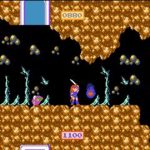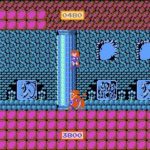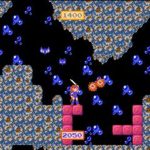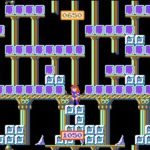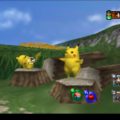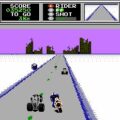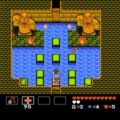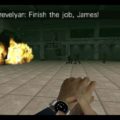Developer: Sunsoft Publisher: Sunsoft Released: 12/12/986 Genre: Adventure
It’s interesting to look back and examine the evolution of certain genres. With the advent of home consoles games began to offer deeper experiences in addition to quick arcade action. The Legend of Zelda and others of its ilk showed that a sprawling adventure was now possible but unfortunately there were growing pains during that journey. Titles like Section-Z and Castlevania 2 made navigation a hassle with the absence of a map. The Wing of Madoola largely avoids most of these failings but does stumble a bit in other areas. Although this ambitious 1986 game has a few blemishes it still holds up but isn’t something that I would recommend over the likes of Crystalis.
Lucia is pretty weak early on but in record time will amass a series of substantial upgrades. Swords increase attack power, boots increase movement speed and jumping height and there are even a few magic spells. Weapons like the flame sword and magic ball consume MP with every use but since the game replenishes your magic between levels they are worth using over the default sword. The most important item however will raise your maximum health and magic by 500; find these at all costs! It is absolutely essential to fully explore every room as you don’t want to miss any item; you’ll need all the help you can get.
In many ways the Wing of Madoola is the prototype for Sunsoft’s later Blaster Master. Both games task you with exploring large areas and ducking into rooms to find necessary power-ups. The difference here is the game is broken up into 16 distinct levels rather than one contiguous world. The game is much easier to get into as a result and simpler. There are benefits to both approaches and I will say as frustrating as it was (mostly due to the lack of battery backup or passwords) I genuinely enjoyed slowly learning the ins and outs of Blaster Master’s massive world. I like both styles and can’t really say that one is better than the other.
That being said that doesn’t mean Madoola’s level design has suffered in comparison. The first two stages are a simple straight path with the occasional underground bit as setup. Stage 3 however gives you a taste of what to expect from then on. The maps become enormous by 8-bit standards and full of dead ends and warp rooms. The goal of every level is to find and defeat the boss for its crystal and head to the exit. The level design can be deceptive; sometimes the exit is to your immediate left or right at the start. But you will still have to explore every nook and cranny to get that crystal and double back.
You’ll want to make sure you’ve searched every room as Madoola is cruelly difficult as soon as you start. Even the first few enemies can take you out in seconds. Luckily an attack and jump upgrade are available within seconds. This evens things out but it is still better to avoid combat in most situations. There is no experience system and enemies drop items so rarely it is not worth it. For Christ sake the game doesn’t even refill your life bar between levels! Once you have the flame sword it’s tempting to slug it out but conserving health is crucial as most bosses and regular enemies can still end you fast. This was pretty much in line with other games in that period but doesn’t make it any less frustrating.
As much as I can appreciate the games length it hurts the game overall. Despite having 16 stages in reality there are only 5 or 6 unique environments with the game recycling each two or three times. The layout changes and sometimes the color palette but it isn’t enough to avoid deja vu. If you have been diligent collecting power-ups than most are redundant halfway through, leaving you with even less incentive to bother exploring. Not even a unique boss in every stage can hide the fact that the game is padded out. I do wonder why they chose to make the game so long as half the number of levels would have been plenty enough. It’s far from a deal breaker but worth noting.
In Conclusion
Overall the Wing of Madoola has held up surprisingly well considering the year it was released. Early adventure games such as this were usually heavily flawed. The fact that the few problems present are more annoying than game breaking is a relief. I would still only recommend it to those who want to fully explore the system’s library as there are many games within the genre that are flat out better. A solid yet flawed gem that could use a sequel.


